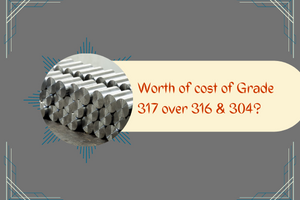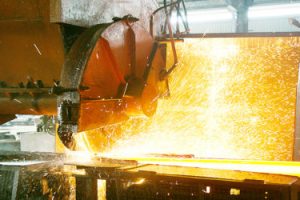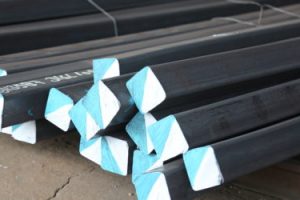Introduction
The two very prominent grades of stainless steel are Grade 304 and Grade 309. Both these variants are known for their astounding Chemical properties making them a viable material for various industrial and domestic applications. Both these grades are austenitic chromium-nickel stainless steel and are known for their good corrosion resistance properties.
If you are confused between these two grades of stainless steel for your manufacturing application, then this article might help you.
304 vs 309/309S CHEMICAL COMPOSITION DIFFERENCE
The chemical composition of different grades of stainless steel is the major factor in determining their varied properties. It is what makes them different from each other. Here is the chemical composition of Grade 304 and Grade 309.
Chemical composition of Grade 309:
- Iron, Fe- 60%
- Chromium, Cr – 23%
- Nickel, Ni – 14%
- Manganese, Mn – 2%
- Silicon, Si – 1%
- Carbon, C – 0.20%
- Phosphorous, P – 0.045%
- Sulfur, S – 0.030%
Chemical composition of Grade 304:
- Carbon, C – .08%
- Manganese, Mn – 2%
- Silicon, Si – .75%
- Phosphorus, P – .045%
- Sulfur, S – .03%
- Chromium, Cr – 18-20%
- Nickel, Ni – 8 – 10.5%
- Nitrogen, N – .10%
With a higher amount of nickel and Chromium, Stainless Steel Grade 309 takes a lead in its properties, but it also makes it costlier.
304 vs 309/309S MECHANICAL PROPERTIES DIFFERENCE
The application of different grades of steel depends largely on its mechanical properties. Their strength, hardness, etc. play an important role in deciding if a particular grade is good for specific applications.
Mechanical properties of Grade 304
- Grade Tensile Strength (MPa) min 515
- Yield Strength 0.2% Proof (MPa) min 205
- Elongation (% in 50 mm) min 40
- Hardness – Rockwell B (HR B) max 92
Mechanical properties of Grade 309
- Grade Tensile Strength (MPa) min 620
- Yield Strength 0.2% Proof (MPa) min 310
- Elongation (% in 50 mm) min 45
- Hardness – Rockwell B (HR B) max 85
304 vs 309 APPLICATIONS DIFFERENCE
Due to their different chemical composition and differences in mechanical properties, Grades 304 and 309 find their uses in different applications.
Some of the common applications of stainless steel grade 304 are:
- Food processing equipment for beer brewing, milk processing, and winemaking.
- Kitchen workstations, sinks, troughs, equipment, and appliances.
- Architectural panelling, beadboard, railings, and trim.
- Chemical containers, such as those used for shipment;
- Heat exchangers.
- Woven or welded screens used for mining, quarrying and water filtration.
- Threaded fasteners.
- Springs.
Some of the common applications of stainless steel grade 309 are:
- Boiler baffles
- Furnace components
- Oven linings
- Firebox sheets
- Other high-temperature containers.
304 vs 309/309S COST DIFFERENCE
The cost of different grades of stainless steel is a major factor in determining its application for various purposes. Sometimes because of higher costs, industries prefer using cheaper stainless steel which can fulfil their requirements without being heavy on the pocket.
The Grade 309 stainless steel is costlier than grade 304. The reason for its higher price is due to the higher content of nickel and chromium. But because of less cost of grade 304, it is more common in various applications




